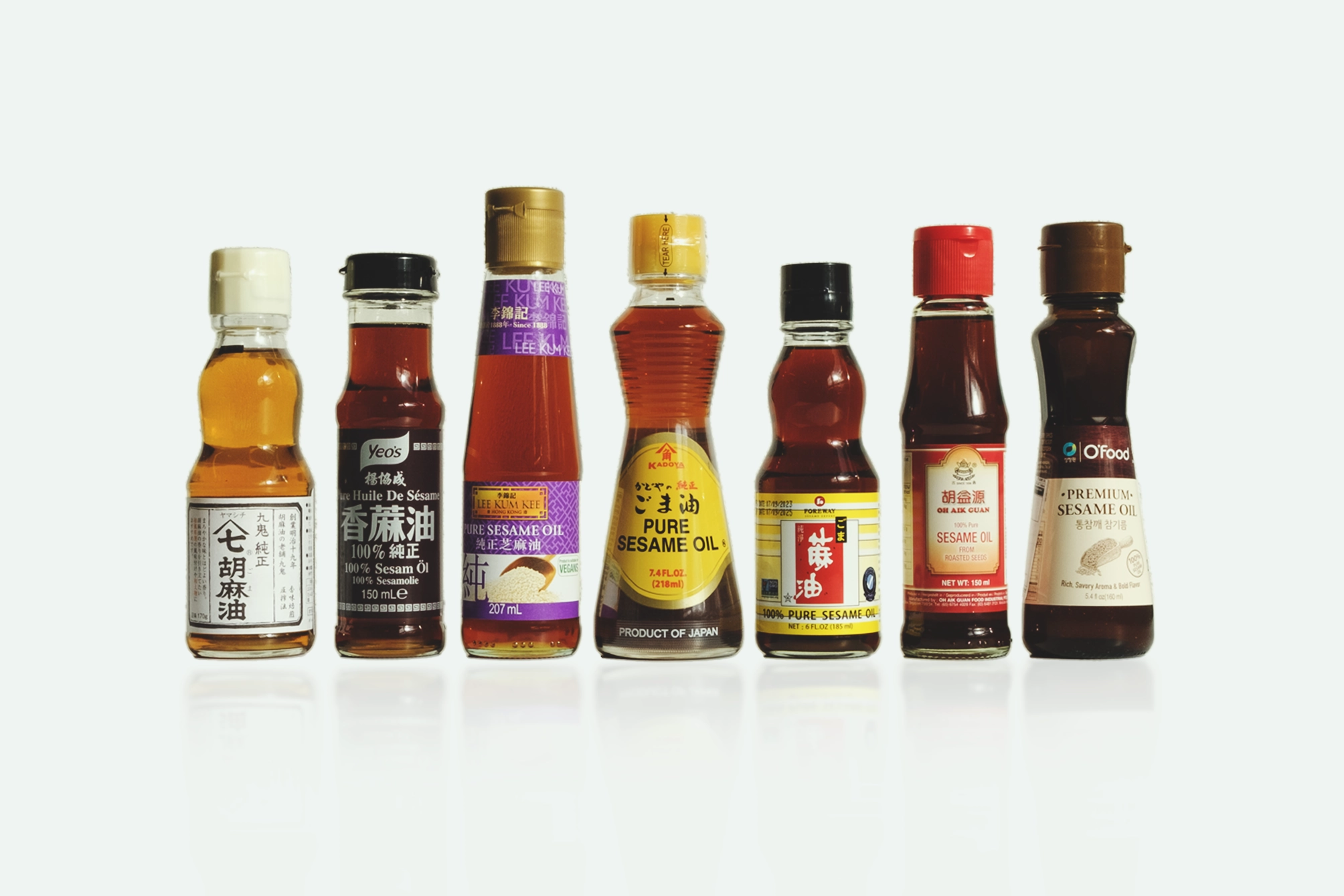The Various Types of Asian Sesame Oil
Sesame oil, essential in kitchens around the world, comes in many variations, each with unique flavors and uses. Whether you are a seasoned chef or a home cook looking to expand your repertoire, understanding the subtle differences between Asian sesame oils can elevate your cooking skills.
Types of Sesame Oil by Country
Japan
Japanese sesame oil is known for its light, delicate flavor and is often made from roasted sesame seeds. This oil has a rich, nutty aroma that is both subtle and refined. Brands like Kadoya are popular and often used in dressings, marinades, and for light sautés, where they add an extra dimension of flavor to various dishes. It is also appreciated in Asian cuisine for its ability to enhance the flavors of other ingredients without overpowering them.
China
Chinese sesame oil is usually darker and richer in flavor, made from roasted sesame seeds. It is often used as a seasoning in stir-fries, soups, and marinades. This type of sesame oil has a pronounced, nutty flavor that gives dishes a unique depth. Well-known brands include Lee Kum Kee and Mee Chun. In addition to use in hot dishes, it can also be added to salads and dipping sauces for extra flavor.
Taiwan
Taiwanese sesame oil is similar to that from China but often has a slightly subtler flavor. It is versatile and can be used in both cold and hot dishes, such as salads, marinades, stir-fries, and even desserts. The production processes are often artisanal, with the sesame seeds being hand-roasted and pressed, resulting in a deeper, more complex flavor. This craftsmanship ensures that the oil has a rich and authentic taste that can enhance many dishes.
Korea
Korean sesame oil, known as chamgireum (참기름), is often made from dark roasted sesame seeds and has a robust, nutty flavor. The intensity of the flavor comes from the careful roasting of the seeds, which gives a rich and deep aroma. It is widely used in side dishes like namul, where it gives the vegetables an extra dimension of flavor, and in dipping sauces for barbecues, where it pairs perfectly with grilled meats and vegetables. Moreover, it is often added to soups and stews to add an extra layer of complexity and flavor.
Other Asian Countries
Other Asian countries such as Vietnam, Thailand, and India also produce sesame oil, each with their own unique production methods and flavor profiles. In Vietnam, sesame oil is often harvested using traditional pressing methods, resulting in a delicate aroma. In Thailand, producers sometimes add extra spices during the process to create a unique flavor. India is known for its darker, richer sesame oil, which is often used in both Ayurvedic treatments and in the kitchen. These oils vary from light and subtle to rich and intense, depending on local culinary traditions and practices.
What is the Difference Between the Different Types of Sesame Oil?
The main difference between types of sesame oil is the degree to which the sesame seeds are roasted. Light sesame oil is made from raw or lightly roasted seeds and has a mild flavor, making it suitable for salad dressings and light sautés. Dark sesame oil, on the other hand, is made from heavily roasted seeds and has a deeper, more intense flavor, making it ideal for marinades, stir-fries, and other savory dishes. Both types of oil have their unique properties and uses, and choosing the right oil can make a big difference in the final taste of a dish.
Flavor Difference Between Types of Sesame Oil
Light sesame oil has a subtle, nutty flavor that is perfect for delicate dishes like salad dressings and light sautés. It is often used in Asian cuisine and can also serve as a flavorful addition to soups and vinaigrettes. Dark sesame oil, on the other hand, has a robust, smoky flavor that pairs well with savory dishes like stir-fries, marinades, and dipping sauces. This oil is made from roasted sesame seeds, which gives it its deep and rich flavor profile. Both types of sesame oil are versatile and can add a unique twist to various culinary creations.
How is Sesame Oil Used?
Sesame oil can be used in various ways:
- Cooking and baking: Light sesame oil can be used for frying and sautéing, while dark sesame oil is usually added at the end of cooking for extra flavor.
- Flavor enhancer: Adding a few drops of dark sesame oil to soup, rice, or noodles can significantly enhance the flavor of the dish.
- Marinade and dressing: Sesame oil is an excellent ingredient in marinades for meat and poultry, as well as in dressings for salads.
How is Sesame Oil Made?
The production of sesame oil starts with carefully cleaning and drying sesame seeds to remove impurities. These seeds are then roasted (to obtain dark oil) or directly pressed (to obtain light oil). During the roasting process, the seeds develop a deep, rich flavor. The oil is extracted through cold pressing or expeller-pressing, where the temperature is carefully controlled to retain nutritional value. After extraction, the oil is filtered to remove any remaining solid particles and then bottled for distribution.
How Do You Use Sesame Oil?
Here are some tips for using sesame oil:
- Use light sesame oil for frying and sautéing vegetables or meat.
- Use dark sesame oil as a flavor enhancer, add it to dishes just before serving.
- Try sesame oil in salad dressings or as a marinade for extra flavor.
Sesame oil is a versatile ingredient that can add an extra layer of flavor to many dishes. By understanding the different types and uses of sesame oil, you can improve your culinary skills and discover new flavors. Experiment with the various types of sesame oil from different Asian countries and find out which one suits your cooking style best!
How Do You Store Sesame Oil?
Sesame oil should be stored in a cool, dark place, preferably in a dark glass bottle. It can also be kept in the refrigerator to extend its shelf life, although this may cause the oil to solidify. In that case, it can simply be brought back to room temperature for use.




 New Arrivals
New Arrivals
 Outlet
Outlet
 Search by country
Search by country
 Search per category
Search per category
 Holiday Season
Holiday Season
 Recipes
Recipes
 Tjin's Blog
Tjin's Blog










